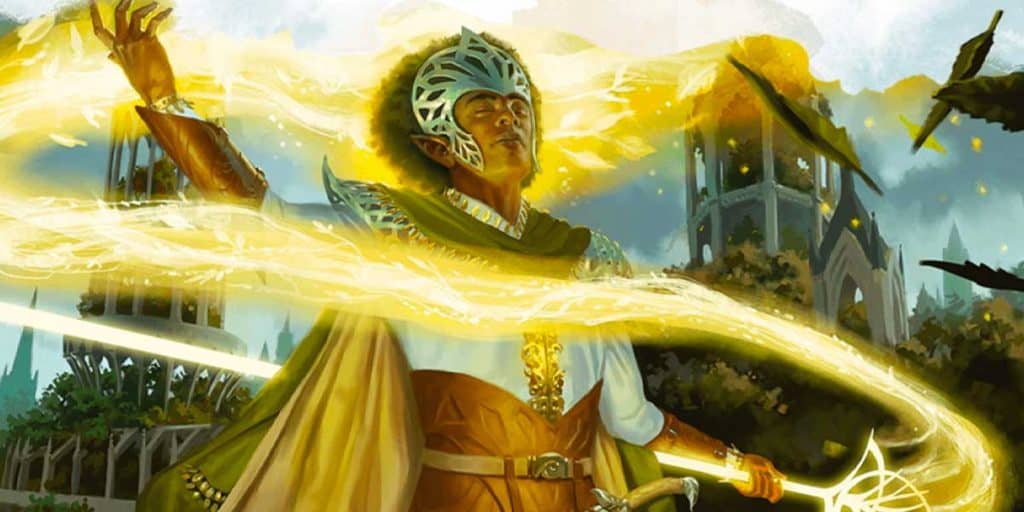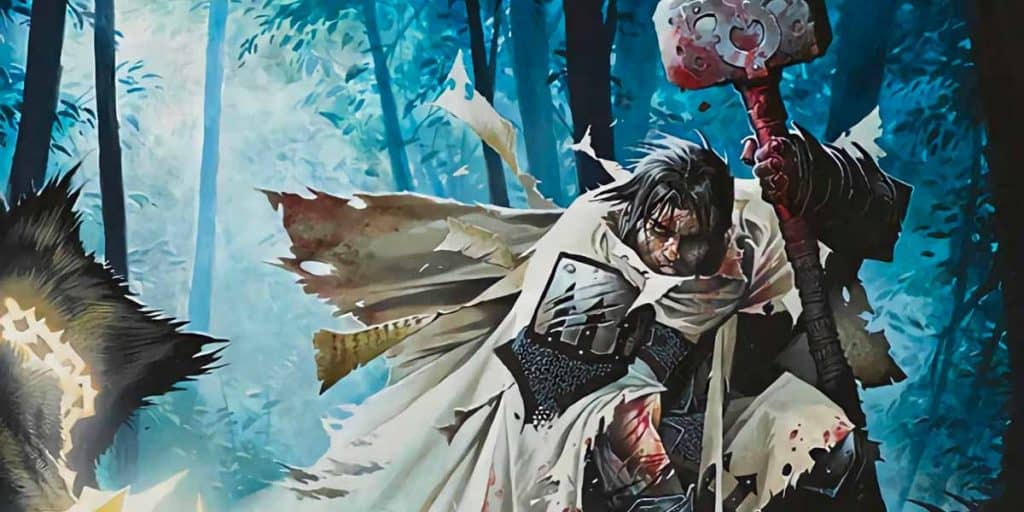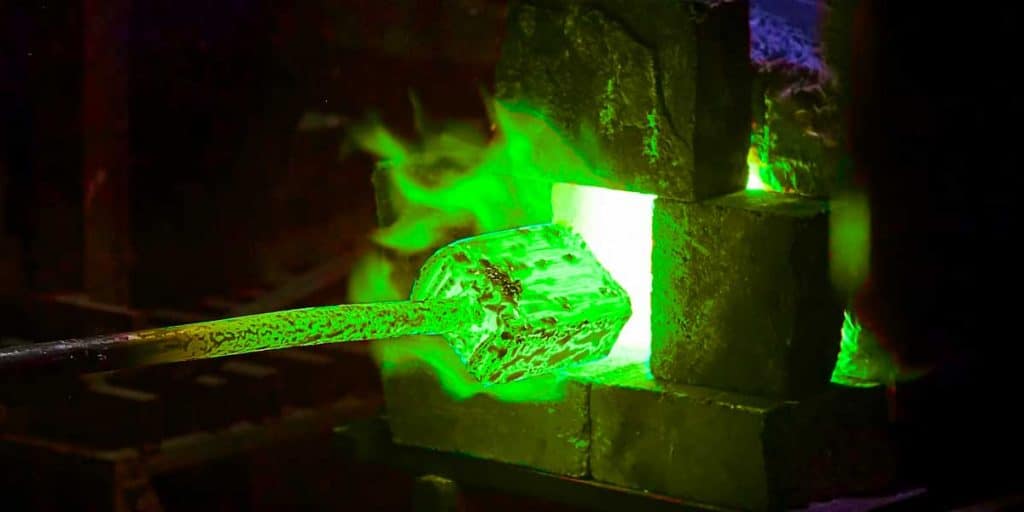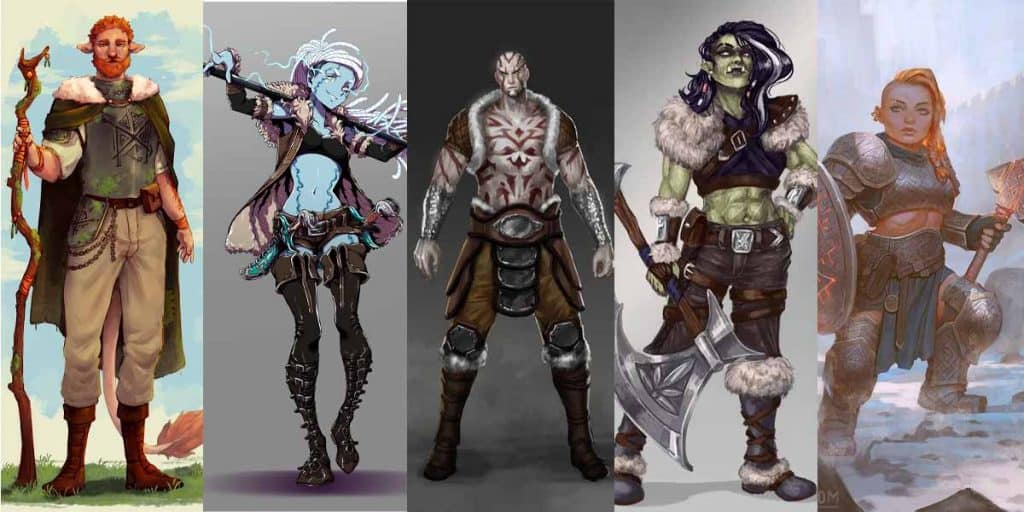Forge Cleric 5E | D&D Forge Cleric Guide

The Forge domain is the newest Cleric subclass. Note that the 5E Forge Cleric was first released alongside the Grave Cleric in Xanathar’s Guide to Everything. The Forge Cleric offers a plethora of spellcasting and frontline combat options. If you are a DnD enthusiast with an inclination towards this new subclass, you’ll be surprised to see how many different builds and character profiles can benefit from the new DnD 5E Forge Cleric domain.
Imagine slinging a battle-ax, forgoing magic completely. On the flip side, imagine depending entirely on magic but still dealing a significant amount of damage. Both of these scenarios can be possible with the 5E Forge domain.
In this Forge Cleric guide, we shall go through every quirk, limitation, and benefit associated with this new subclass.
D&D Forge Domain Cleric Explained
One of the first 3 classes to make it to the tabletop game, Clerics have always boasted a deep, special connection with the roots of Dungeons and Dragons. It is by far the only class to retain its original name over the years. Owing to their dedication and intrinsic connection to the deities, they have been imbued with an array of divine powers.
The 5E Forge Clerics are known to devote themselves to a deity presiding over the Forge domain. Arguably one of the best Cleric subclasses, they are devoted to a diverse range of hardy Gods representing metal, hearth, fire, smithing, crafting, and more. The D&D 5E Forge Clerics are as crafty as the Artificer class, being devoted to Gods who are innately linked to blacksmiths, artisans, and metal workers.
The Cleric Forge domain is not to be mistaken with that of life, nature, and death. It is not solely a lofty idea; in fact, it is the every essence of substance and its creation. The deities overseeing the Forge domain are devoted to the Forge, and are hardworking and patient. Naturally, the same is expected of Forge Clerics.
Here is the list of deities who can be worshiped by Forge Clerics:
- Moradin
- Darahl Firecloak
- Gond
- Mythrien Sarath
- Tharmekhûl
- Reorx
- Onatar
- Hephaestus
- Goibhniu
If you are subscribed to the Cleric Forge domain, you can select any of the aforementioned deities to get your powers from. Note that this subclass, if placed in the Eberron settings, can even be atheists, but their indomitable faith in the power of the Forge makes them a part of the domain.
Best Forge Domain Cleric Quirks
Now that we know the DnD 5E Forge Cleric, let’s get on with the quirks they boast. Like all classes and subclasses, the Clerics of the Forge domain have some unique abilities that make them stand out. In this section, we shall go through the various quirks of the Forge Clerics.
1. Artisan’s Blessing

The Artisan’s Blessing ability is available to Forge Clerics at the 2nd level. This feature offers immense creativity, even if Wizards of the Coast shot down numerous attempts to break it. Here’s what Xanathar’s Guide to Everything states about this unique ability:
“Starting at 2nd level, you can use your Channel Divinity to create simple items. You conduct an hour-long ritual that crafts a non magical item that must include some metal: a simple or martial weapon, a suit of armor, ten pieces of ammunition, a set of tools, or another metal object. The creation is completed at the end of the hour, coalescing in an unoccupied space of your choice on a surface within 5 feet of you. The thing you create can be something that is worth no more than 100 GP.
As part of this ritual, you must lay out metal, which can include coins, with a value equal to the creation. The metal irretrievably coalesces and transforms into the creation at the ritual’s end, magically forming even nonmetal parts of the creation. The ritual can create a duplicate of a non magical item that contains metal, such as a key if you possess the original during the ritual.”
Often, players would be naturally inclined towards abusing this feature by attempting to manufacture pricey items with the help of cheap metal objects. However, DMs usually do not allow crafting costly items one at a time to avoid month-long efforts.
2. Blessing of The Forge
This is one of the mainstays of the 5E Forge Cleric, available at level 1. Here’s what Xanathar’s Guide to Everything states about this unique ability:
“At 1st level, you gain the ability to imbue magic into a weapon or armor. At the end of a long rest, you can touch one non magical object that is a suit of armor or a simple or martial weapon. Until the end of your next long rest or until you die, the object becomes a magic item, granting a +1 bonus to AC if it’s armor or a +1 bonus to attack and damage rolls if it’s a weapon. Once you use this feature, you can’t use it again until you finish a long rest.”
Simply put, your character has the power to buff a basic weapon or a suit of armor. The +1 AC buff or damage stays with the weapon as long as your character prefers, or till he dies. In early games, the +1 armor or weapon goes a long way. Note that you will require a long rest to utilize this feature.
Here are the items that might not receive the bonus:
- Shields
- Weapons barring simple or martial ones
- Magical weapons
3. Divine Strike

The Divine Strike feature offers a free damage bonus without requiring any additional action. Here’s what Xanathar’s Guide to Everything has to say about this unique ability:
“At 8th level, you gain the ability to infuse your weapon strikes with the fiery power of the forge. Once on each of your turns when you hit a creature with a weapon attack, you can cause the attack to deal an extra 1d8 fire damage to the target. When you reach 14th level, the extra damage increases to 2d8.”
With the Divine Strike, your 5E Forge Cleric gets a nice damage boost without costing anything. While 1d8 fire damage is nothing to worry about, the scaled bonus of 2d8 at level 14 is worth it. The Divine Strike stacks quite well with many other spells, such as the Searing Smite.
However, how well your character benefits from the Divine Strike feature depends entirely on your build at the end of the day. For spellcasting Forge Clerics, this may not be the best choice.
4. Saint of Forge And Fire
The description in Xanathar’s Guide to Everything should offer a good idea of what this unique ability does. Read on:
“Saint of Forge and Fire is amazing. It’s powerful. For some, it’s too powerful. If you have read this guide through its entirety, you know that a powerful tank is a recurring theme for the Forge Cleric. Saint of Forge and Fire takes that to a whole new level. To wit:
At 17th level, your blessed affinity with fire and metal becomes more powerful:
-You gain immunity to fire damage
-While wearing heavy armor, you have resistance to bludgeoning, piercing, and slashing damage from non magical attacks.”
So to begin with, your Forge Cleric character will be entirely immune to fire damage. You do not have to rely on any ritual spell or an item per se. On top of that, the resistance buff upon wearing heavy armor is exceptionally helpful.
5. Soul of The Forge

This unique ability is one of the most interesting highlights of all the quirks available to 5E Forge Clerics. Its usage, according to Xanathar’s Guide to Everything, is quite straight-cut:
“Starting at 6th level, your mastery of the forge grants you special abilities:
• You gain resistance to fire damage.
• While wearing heavy armor, you gain a +1 bonus to AC.”
Needless to mention, the resistance bonus is extremely beneficial, especially since fire damage is one of the common ones you will be faced with. If a dragon approaches the party, your character may eat up a lot of the fire damage.
The +1 bonus, when stacked with heavy armor that has already been bonused with Blessings of the Forge, can prove to be quite nasty. What’s more, your Forge Cleric can hit 20 AC by level 6 without even taking out a shield.
Limitations of Forge Cleric Domain
No matter how powerful the DnD 5E Forge Cleric is, there ought to be some limitations to spice up the game and make it fair for all. First and foremost, note how most of the abilities and bonuses are centered around fire damage. While it is true that fire is one of the most commonly dealt damage types in 5E and that your resistance to fire damage can be highly beneficial, when juxtaposed with the creatures who are immune to your preferred type of damage, it can be a double-edged sword.
No less than 37 creatures listed have fire resistance, and 40 more are entirely immune to it. So, essentially it all boils down to what kind of monsters your Dungeon Master decides to throw your way. Chances are, you will have to beat the odds by coming up with other ways to capitalize on added damage. Dual-wielding weapons with varying elemental bonuses are a great solution. Your creativity will be the decisive factor in how this limitation poses a challenge to your journey. Just know that the limitations make the D&D 5E Forge domain exciting.
Best Races for Forge Cleric Domain

What is the best race for the 5E Forge domain? To answer that question, we have to go through the few best races that benefit from this subclass. Like any other domain, there is no ONE greatest race for it, but a few can be recommended:
1. Firbolg
The fey-oriented half-giants get a powerful build and a few exciting magical abilities that make them exceptionally strong clerics. Moreover, the +2 Wisdom and +1 Strength is a terrific fit!
2. Genasi
Genasi is essentially a plane touched human, imbued with the power of the elements. The +2 Constitution gives us a great start. However, the rest of the abilities depend on the chosen subrace.
3. Goliath
The +1 Constitution and +2 Strength can be quite beneficial. Moreover, resistance to cold damage can go hand in hand with resistance. With Stone’s Endurance, we get yet another defensive bonus. With this, you can reduce the damage dealt by 1d12 + Constitution modifier, once every long or short rest.
4. Half-Orc
+2 Strength and +1 Constitution are great starts if you play as a melee Forge Cleric builds. Your perseverance and endurance keep you on the battlefield and help save your allies. However, the lack of Wisdom can prove to be challenging.
5. Hill Dwarf
Dwarfs are deemed as quintessential craftsmen. They are a natural fit for this domain’s forging element. Moreover, hill dwarfs will never be bogged down by heavy armor. It can open up Warhammer for your Cleric build, and when paired with the heavy armor bonuses of this subclass, it can be a great fit!
Conclusion
The key takeaway is: it all depends on your character build. Whether your character is inclined towards spellcasting or wielding swords, you can pick and choose your unique abilities. Like every subclass, it has its pros and cons, but once you know how to work with the limitations, you can utilize the D&D 5E Forge domain to your benefit. Happy questing!






